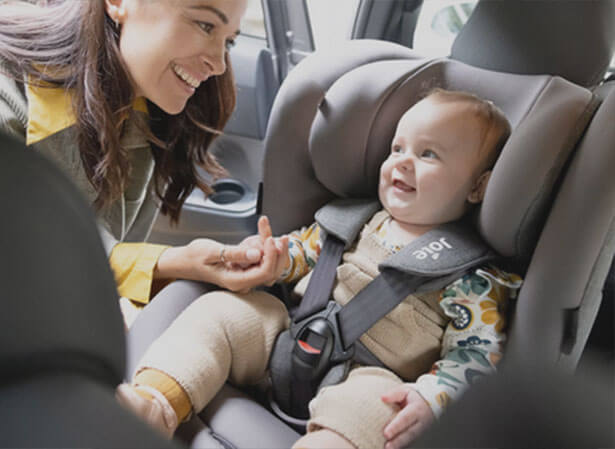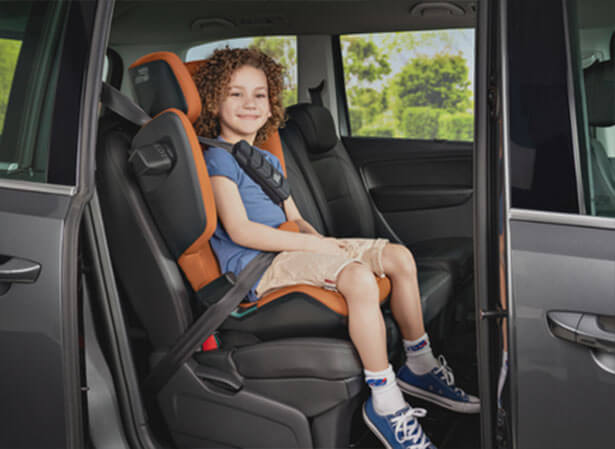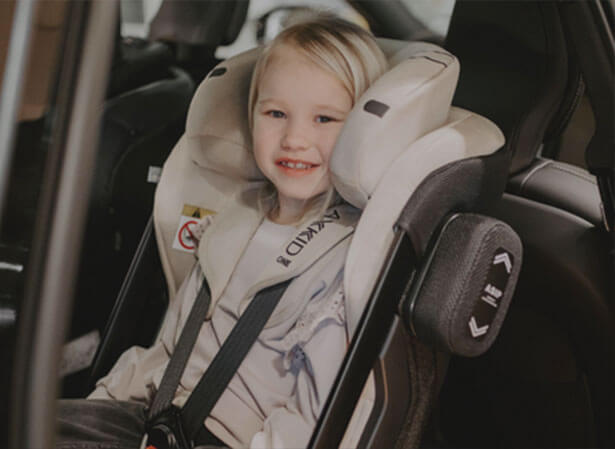CAR SEAT SAFETY CENTRE
Committed to safety
Winstanleys Pramworld are an independent nursery retailer and car seat specialist covering the North West. We are committed to safety and champion extended rear facing car seats. Our team of IOSH certified car seat experts do not have sales targets and will provide you with impartial advice and support to help you choose and install the right seat for you and your growing family.
Frequently Asked Questions
Car Seat Confusion? What you need to think about when buying a car seat
ECE R44/04 approved
This strict European safety standard ensures Car Seats meet a minimum safety requirement. Additional safety ratings are available which go beyond the ECE R44/-4 standard by European testing organisations like Stiftung Warentest, Which? and ADAC.
Compatibility with your vehicle
It’s important to check your vehicle compatibility with the car seat manufacturers to ensure correct and safe installation. Most car seat manufacturers have an online compatibility guides.
Safety & Protection Features
Car seat safety technology is continually changing and evolving resulting in greater safety but more confusion for customers. Here is a quick overview of some of the common key car seat safety features.
What kind of harnessing does it offer?
5-point harness, 3-point harness or a vehicle adult seat belt?
Does it offer advanced side impact protection?
In case of a common form of collision – from the side.
Does it offer superior head and neck protection?
To protect a growing child’s vulnerable head and developing neck muscles.
Does it offer extended rearward facing travel?
Proven to be the safer way to transport smaller children (and a legal requirement until 9kg).
Check that your child is ready to move to the next stage of seat
For safety reasons, you should keep your child in each stage for as long as possible – until they reach the weight limit or the head reaches the top of the seat. This is especially important for babies as rearward facing seats offer the safest way of travelling. The general rule of thumb of moving your child to the next group is:
- Move from a Group 0 + infant carrier when your child exceeds the weight limit and can sit up unaided, or if their head is higher than the top of the infant carrier.
- Move from a Group 1 seat when the upper edge of the shell is roughly at eye level of the child or your child exceeds the weight limit.
- Do not move too early to a Group 2-3 seat because these seats are wider to accommodate larger children. Also a younger child's shoulders are too narrow to hold to the adult seat belt securely. A small child can therefore easily slip out from under the belt, especially when they fall asleep during the journey.
A child’s head should ideally never exceed the top of the seat shell. This is especially important when using an infant carrier in order to minimise the risk of head contact with interior components of the car should an accident occur.
Additionally, the child’s body is more supported over a larger surface area of the seat than they would be in an infant carrier where the child is in a flatter position.
Which Car Seat?
- Choose a car seat based on your child’s height and weight and one that is compatible with your car
- Weight-based car seats must be rear-facing until your child weighs more than 9kg
- Height-based car seats are known as ‘i-Size’ seats and must be rear-facing until your child is over 15 months old
- Children must use a car seat from birth until they’re 12 years old or 135cm tall (whichever comes first)
- Never use an infant carrier on the front passenger seat with the airbag activated
- Only EU-approved child car seats can be used in the UK
- Ensure you have an infant carrier for baby’s first car ride home from the hospital
| Car Seat Group | Baby's Weight | Baby's Age (Approx.) | Car Seat Type |
|---|---|---|---|
| Group 0+ | 0 -13kg | Birth - 12/15 Months | Rear-facing infant carrier |
| Group 0+/1 | 0 -18kg | Birth - 4 Years | Combination and rear-facing only |
| Group 1 | 9 -18kg | 9 months - 4 years | Combination and rear facing only |
| Group 1/2 | 9 -25kg | 9 months - 6 years | Forward-facing car seat |
| Group 1/2/3 | 9 - 36kg | 9 months - 11 years | High back booster with harness |
| Group 2/3 | 15-36kg | 4 years - 11 years | High back booster and booster cushions |
What are the UK Legal Standards for Car Seats?
ECE R129 i-Size (this is a new standard for group 0/0+/1 seats that will exist alongside ECE R44/04 for a number of years and sets more advanced safety standards based on more recent safety data).
ECE R44/04 To meet ECE R44/04 approval car seats are tested in frontal collisions at 50km/h and rear collisions at 30 km/h using crash test dummies and advanced measuring instruments designed to assess the levels of protection each seat offers. ECE R44/04 approved seats can all be identified by their orange approval label.
What are the Benefits of Extended Rear Facing?
Did you know that frontal collisions are the most common car accidents and often the most severe? We believe the best way to protect your younger passengers from forceful frontal impacts is to keep them rear-facing in their car seat for as long as possible. It has been proven that travelling in a rear-facing car seat will greatly reduce the stress on your child's neck and spine, providing superior protection in the event of a frontal impact. Your baby's muscles are still developing during the early years; if the muscles and spine are subject to too great a force the consequences may be catastrophic.
The most essential difference between you and your baby is the size of the head. For a 5-month-old baby, the head represents 25% of their total body weight. For an adult the head represents only 6%. In a forward-facing seat during an impact, the child is flung forward in their seat with their head thrown towards their knees, placing considerable strain on their delicate neck, spine and upper body. In a rear-facing car seat during a frontal impact, the child is pushed back, impact is spread across the back of the seat, with considerably less flying debris coming into contact with the child.
What to do if your car seat was involved in a car accident?
If you car was involved in an accident, even if the child was not in the car seat at the time - there may be damage that is not visible. We would always advise the car seat is replaced for complete peace of mind.
Can my Child wear a winter coat in the car seat?
If a child is wearing a thick coat there is a risk that the harness or car seat belts cannot be tightened sufficiently. We recommend that thick coats are removed in the car and the child is covered with a blanket over the top of the harness.
Can I fit three car seats in my car?
Always refer to your vehicle handbook to see where child seats can be used - some vehicles do not allow seats in the middle rear seat or the front. Although vehicles are advertised as having 5 seats, the centre rear seat is usually much narrower than the outer seats.
My Childs Head falls forward when they fall asleep – What should I do?
A baby with no head control should be positioned in a recline position, the ideal angle for safety and comfort is 45 degrees. It is dangerous to allow a head to fall forward as this can lead to a drop in oxygen levels and impairs their safety in the event of an accident.
What is Plus Test?
Swedish plus test is the most stringent test for any car seat and the only test that measures the weight load on a child’s neck. The test is not carried out in any other country, making it truly unique and an additional test to the standard.
Why should a child be rear facing?
Winstanleys Pramworld have always championed extended rear facing car seats as they can reduce the risk of death or serious injury in a frontal collision by up to 90%. See the difference between forward facing and rear facing position in a frontal collision in this short video made by the The Norwegian Council for Road Safety.
When shopping for a new car seat we believe it's imperative that you select one that's suitable for your child, compatible with your vehicle and has been correctly and professionally installed in your car. To give you complete peace of mind we'd recommend booking an in-store appointment with one of our car seat safety experts who'll not only help you select the right car seat for your needs but install it correctly in your vehicle. You can book an appointment with a car seat specialist by using the enquiry form. Alternatively you can send us an email or contact us by telephone on 01942 214864.
Only the Trusted and Safest Brands
Where to find us
Stoke Store
Unit 4 Leek Road Retail Park
Leek Road
Hanley
Stoke-on-Trent
ST1 3NQ
Wigan Store
725-729 Ormskirk Road
Pemberton
Wigan
Lancashire
WN5 8AT
Shop Car Seats
Car Seats for every stage

From Birth
Infant Carriers
Suitable from birth (76cm approx.)

From Birth
Baby Car Seats
Suitable from birth

From 15 months
Toddler Car Seats
Suitable from 15 months (approx.)

From 3.5 years
Child Car Seats
Suitable from 3.5 years (100cm approx.)









